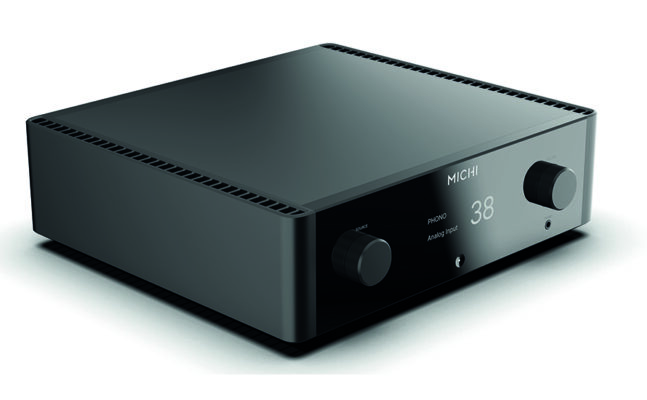LOUIS-PIERRE BERGERON, MEAGAN MILATZ.
Works for natural horn and pianoforte by Righini, Potter, Beethoven, Süssmayr and von Krufft.
ATMA, ACD2 2864.
Interpretation: 🟊🟊🟊🟊
Technique: 🟊🟊🟊🟊🟊
Regarding this disc which is, to say, the least original (natural horn and pianoforte!) we will first start by congratulating Anne-Marie Sylvestre for having been able to find a balance on the sound level, at the Saint-Benoît church in Mirabel. Then there is the miracle of impeccability, since the natural horn is a formidable instrument. Still, listening to an hour of horn and pianoforte is an austere thing. But for lovers of this instrument, it was necessary to point out the existence of this remarkable CD displaying the mastery of Pierre-Étienne Bergeron, horn player at the National Arts Center. Anyone who digs deeper will find astonishing moments of very beautiful music, such as Variation IV, Adagio sostenuto, from the Sonata di bravura by Cipriano Potter (1792-1871) which probably gives its edge to this sharp disc, certainly, but very well done.
🞲 🞲 🞲
LANG LANG AND GINA ALICE (piano), GEWANDHAUSORCHESTER LEIPZIG, ANDRIS NELSON.
Saint-Saëns: Carnival of the Animals, Piano Concerto No. 2. Piano pieces from the French repertoire.
DG, 485 9224.
Interpretation: 🟊🟊🟊🟊
Technique: 🟊🟊🟊
Chinese pianist Lang Lang has become a business of his own. The skillful marketing of his talent generally earned him the scorn of critics and the support of a wide audience. Trying to take an objective look, we must recognize that two of his last three records (Piano Book and The Disney Book) were clever products intended to generate clicks on listening platforms. We are happy to have a more solid project here, carried out with his wife and a real desire. The downside is that the publisher perhaps gives his star more than he asks for when, in The Elephant of the Carnival of the Animals, we hear the pianists’ punctuation almost more than the double bass. But the Lang Lang-Gina Alice couple pays great attention to poetic moments like Aquarium du Carnaval or the Petite suite of the program without orchestra. We will also appreciate Lang Lang‘s finesse of touch in the French solo pieces, including those by several female composers, and his unbridled verve in the 2nd Concerto of Saint-Sans.
🞲 🞲 🞲
CZECH PHILHARMONIC ORCHESTRA,
SEMYON BYCHKOV.
My Vlast (My Homeland).
Pentatone, PTC 5187 203
Interpretation: 🟊🟊🟊
Technique: 🟊🟊🟊🟊
This publication comes very timely, March 2nd, 2024 being the date of the bicentenary of the birth of Bedřich Smetana, the father of Czech music. The window of opportunity ends there, since rarely in its history, if ever, has the Czech Philharmonic Orchestra produced such a flat and boring version of the symbolic My Homeland cycle. Perhaps Semyon Bychkov wanted to play the card of solemnity, but above all he extinguished the movement and the general momentum of the paintings, their conquering verve, which does not compensate for certain achievements in terms of the search for colors and balances.
We will have fun comparing what the Orchestra of… Malaysia (!) does in this score under the direction of Claus Peter Flor in a magnificently recorded Bis SACD. As for the Czech references with this orchestra, there is no shortage of them, from Talich to Belohlavek via Ancerl, Neumann, Kubelik (his return to the country) and, above all, Mackerras.
🞲 🞲 🞲
 GIACOMO PUCCINI
GIACOMO PUCCINI
WALES NATIONAL OPERA ORCHESTRA,
CARLO RIZZI.
“Symphonic Suites” (designed by Carlo Rizzi).
Signum, SIG 778.
Interpretation: 🟊🟊🟊🟊
Technical: 🟊🟊
Puccini symphonic suites? This doesn’t exist, obviously. But, as with Smetana, we are in an anniversary year, the centenary of his death (in November 2024) and there could be potential interest in bringing Puccini into symphony concert halls. This is what the renowned opera conductor Carlo Rizzi apparently said, who has compiled Suites from Madame Butterfly and Tosca into a CD supplemented by the Rizzi editions of two versions of the Symphonic Prelude, as well as the Symphonic capriccio.
The genre of the symphonic suite is obviously very popular for ballets. It was applied to operas by Richard Strauss during his lifetime and, recently, with success, to Leoš Janáček, on several occasions. The idea for Puccini is good and the themes well articulated (Rizzi does not try to cover the lack of vocal line and remains faithful to the orchestration) in suites of 17 and 20 minutes. We mention this disc because Puccini‘s melodic vein is obviously irresistible and the production pleasant. Downside, however: the acoustics are dry.
🞲 🞲 🞲
“Shadows of My Ancestors.” Prokofiev: Romeo and Juliet, 10 pieces. Saidaminova: The Walls of Ancient Bukhara. Ravel: Gaspard of the night.
Alpha, 1028.
Interpretation: 🟊🟊🟊🟊🟊
Technique: 🟊🟊🟊🟊
Oh, the wonder! I was reluctant to select this disc, because putting forward a program showing Romeo and Juliet a little over a year after the CD La Dolce Volta by Jean-Baptiste Fonlupt was a little redundant. And then, what’s the point of a new Gaspard de la nuit? But it’s impossible not to shine the spotlight on this miracle. Behzod Abduraimov, a 33-year-old Uzbek pianist, launched his career twelve years ago, supported by Vladimir Ashkenazy and recorded by Decca. At the time, he had an image of an ivory breaker (pianist with a fist) which stuck a little to him. This is precisely why we must talk about this second recital with Alpha, its publisher from now on, because it demonstrates the opposite: an art of lace, cutting, characterization and climate. The famous Scarbo by Gaspard de la nuit is a perfect example: Abduraimov does not splash it with his talent, but carves it and doses it to the millimeter. Between Prokofiev, fascinating for his characterizations, and Ravel, we discover a work by Dilorom Saidaminova, an Uzbek composer trained in Moscow. His composition is a kind of Paintings from a mysterious exhibition of his country.
More to come soon …








